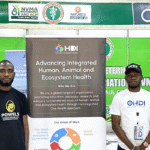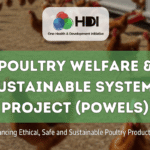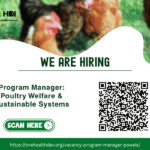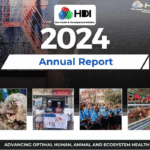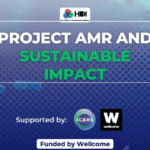Reducing Methane and other Greenhouse Gas Emissions in Asian Dairy Farming: Challenges and Solutions

The rapid growth of dairy farming in Asia, driven by increased demand for milk and dairy products, has brought significant economic benefits to the region. However, several studies have shown that livestock production, including the stages of growing, transport, processing, and consumption, has a relatively significant impact on climate change (Milani et al., 2011). Dairy cattle, in particular, were shown to impact the environment through their potential negative impacts on air, water, and soil (Naranjo et al., 2020). The need to balance agricultural productivity with environmental sustainability is more critical than ever as Asian countries strive to meet climate goals while ensuring food security. Here, we’ll explore how dairy farming contributes to GHG emissions and methane production and examine strategies to help reduce these emissions while maintaining dairy productivity.
How Dairy Farming Contributes to GHG and Methane Emissions
The largest source of methane emissions in dairy farming is enteric fermentation, a digestive process in which ruminants like cows break down fibrous plant materials. During digestion, methanogenic bacteria in the rumen produce methane, which is then released primarily through belching.
Similarly, methane and nitrous oxide emissions also arise from the handling and storage of manure. In many dairy farms, manure is stored in anaerobic conditions, where methane production is heightened due to the lack of oxygen (Amon et al., 2006).
In addition, emissions from feed production, transportation, and processing contribute significantly to the overall GHG footprint of dairy farming. The production of crops like corn and soybeans, commonly used in dairy feed, often involves energy-intensive inputs, such as synthetic fertilizers. These fertilizers release nitrous oxide, further adding to the dairy industry’s GHG emissions.
The Challenge of Reducing Emissions in Asia’s Dairy Sector
Asia faces unique challenges in reducing emissions from dairy farming, largely due to the diversity in farm structures, feed resources, and dairy management practices (Food and Agriculture Organization of the United Nations, 2023). While large commercial farms with modern infrastructure and technology are present in some regions, smallholder farmers still produce a significant share of the milk. This diversity complicates the implementation of uniform emission-reduction strategies, as different scales of farms require distinct approaches. Moreover, limited access to technology, financing, and training in emission-reduction practices hinders many small-scale dairy farmers from adopting sustainable practices.
Effective Strategies for Reducing Methane and GHG Emissions in Dairy Farming
Reducing methane and other GHG emissions in dairy farming requires a multi-faceted approach. Some key strategies include the following:
- Improving Feed Quality and Diet Composition: Feeding cereal forages can promote propionate production and lower methane emissions due to higher starch concentration (Beauchemin et al., 2009). Incorporating high-oil byproducts, such as distillers, grains or oilseed meals, can decrease methane emissions (Firkins et al., 2013). Feed supplementation with the methanogenic inhibitor 3-NOP is a viable strategy for reducing CH4 levels. 3-Nitrooxypropanol, a structural analog of methyl-coenzyme M, inhibits methyl-coenzyme M reductase (MCR), a nickel enzyme responsible for the final stages of methanogenesis (Duin et al., 2016).
- Manure Management Innovations: Shifting from traditional, anaerobic manure storage methods to systems that reduce methane generation is essential. One approach involves using biochar, a charcoal-like substance made from plant or animal waste. Biochar has numerous benefits, including improving composting efficiency, conserving nitrogen, accelerating nutrient transformation, and enhancing oxygen supply (Mao et al., 2018). Additionally, biogas digesters are used to reduce GHG emissions.
- Genetic Selection and Breeding Programs: Crossbreeding high-producing cattle with indigenous breeds is another strategy being explored, particularly in tropical Asian climates, where native breeds often exhibit greater resistance to heat stress and disease.
- Education and Capacity Building for Smallholder Farmers: Providing training on sustainable dairy practices and emission-reduction techniques is vital to making progress at the grassroots level. Farmers need information on improved feed management, efficient manure handling, and the benefits of biogas digesters.
In summary, addressing GHG emissions from dairy farming in Asia is both a challenge and an opportunity. The region can make significant strides toward sustainable dairy production by implementing emission-reduction practices tailored to the needs of smallholder farmers and large commercial dairy operations. While Asia’s dairy industry continues to expand to meet growing demand, balancing this growth with effective GHG mitigation strategies is essential to ensuring both food security and environmental sustainability.
References
- Amon, B., Kryvoruchko, V., Amon, T., & Zechmeister-Boltenstern, S. (2006). Methane, nitrous oxide and ammonia emissions during storage and after application of dairy cattle slurry and influence of slurry treatment. Agriculture, Ecosystems & Environment, 112(2–3), 153–162.
- Beauchemin, K. A., McAllister, T. A., & McGinn, S. M. (2009). Dietary mitigation of enteric methane from cattle. CABI Reviews, 2009, 1–18.
- Duin, E. C., Wagner, T., Shima, S., Prakash, D., Cronin, B., Yáñez-Ruiz, D. R., Duval, S., Rümbeli, R., Stemmler, R. T., & Thauer, R. K. (2016). Mode of action uncovered for the specific reduction of methane emissions from ruminants by the small molecule 3-nitrooxypropanol. Proceedings of the National Academy of Sciences, 113(22), 6172–6177.
- Food and Agriculture Organization of the United Nations (2023). Reducing methane emissions in livestock systems in Asia and the Pacific – Enhancing national climate actions through the Global Methane Pledge. In FAO eBooks. https://doi.org/10.4060/cc6388en
- Firkins, J., Lee, C., Tricarico, J. M., Dijkstra, J., & Yang, W. (2013). Mitigation of methane and nitrous oxide emissions from animal operations: I. A review of enteric methane mitigation options. J Anim Sci, 91, 5045–5069.
- Mao, H., Lv, Z., Sun, H., Li, R., Zhai, B., Wang, Z., Awasthi, M. K., Wang, Q., & Zhou, L. (2018). Improvement of biochar and bacterial powder addition on gaseous emission and bacterial community in pig manure compost. Bioresource Technology, 258, 195–202.
- Milani, F. X., Nutter, D., & Thoma, G. (2011). Invited review: Environmental impacts of dairy processing and products: A review. Journal of Dairy Science, 94(9), 4243–4254.
- Naranjo, A., Johnson, A., Rossow, H., & Kebreab, E. (2020). Greenhouse gas, water, and land footprint per unit of production of the California dairy industry over 50 years. Journal of Dairy Science, 103(4), 3760–3773.
Author

Dr. Roshik Shrestha
Dr. Roshik Shrestha is a veterinarian from Nepal with experience in clinical practice, research, and education. He earned his Bachelor’s degree in Veterinary Science and Animal Husbandry from Nepal Polytechnic Institute, affiliated with Purbanchal University.
He is currently working as a veterinary clinician and officer at Madhyabindu Municipality. With a focus on animal health, dairy, poultry, and sustainable food production, he integrates research with practical applications to improve livestock management and food security.



